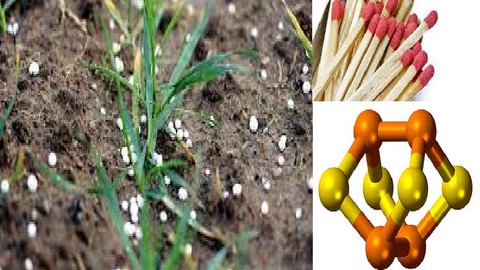
p-block Elements part-II
p-block Elements part-II, available at $19.99, with 30 lectures, and has 5 subscribers.
You will learn about The students will get a wide picture of different elements. The students will learn about p block metals. The students will have a deep knowledge about the extraction processes of Metals. The students will know about the importance of Nitric acid and Sulphuric acid.. This course is ideal for individuals who are For the Beginners and students of twelfth standard. It is particularly useful for For the Beginners and students of twelfth standard.
Enroll now: p-block Elements part-II
Summary
Title: p-block Elements part-II
Price: $19.99
Number of Lectures: 30
Number of Published Lectures: 30
Number of Curriculum Items: 30
Number of Published Curriculum Objects: 30
Original Price: $19.99
Quality Status: approved
Status: Live
What You Will Learn
- The students will get a wide picture of different elements.
- The students will learn about p block metals.
- The students will have a deep knowledge about the extraction processes of Metals.
- The students will know about the importance of Nitric acid and Sulphuric acid..
Who Should Attend
- For the Beginners and students of twelfth standard.
Target Audiences
- For the Beginners and students of twelfth standard.
The p-block Elements
Elements belonging to groups 13 to 18 of the periodic table are called p-block elements.
Their general electronic configuration is ns 2 np 1 – 6. The s-orbitals
of these elements are complete whereas the p-orbitals are progressively filled. The properties of these elements are dependent upon the electrons present in p-orbitals.
Some characteristics of p-block elements summarized for a quick reference :
1.Atomic and Ionic Radii. The size of an atom is expressed in terms of atomic radius, van der Waal’s radius or covalent radius. The atomic radii of p-block elements decrease on moving from left to right in a given period and increases from top to bottom in any group.
2. Ionization Enthalpy. The ionization enthalpy of p-block elements increases from left to right in a period and decreases on descending a group. However, the ionization energy of group 13 elements is found to be smaller than the group 2 elements (Alkaline earths).
3. Electron Gain Enthalpy. Electron gain enthalpy increases from left to right along a period amongst the p-block elements. It value decreases from top to bottom in a particular group.
4. Electronegativity. It is the property of an atom in a molecule. It refers to the tendency of an atom to pull the shared pair of electrons towards itself. It depends upon
(i)size of atom and
(ii) electrons needed complete the valency shell.
In general, the electronegativity increases from left to right along the period and decreases from top to bottom in a group. The difference of electronegativities between the two atoms gives us an idea about the kind of bond set up between two atoms.
Course Curriculum
Chapter 1: Introduction
Lecture 1: 7.1. Contents to p – block elements part -II
Lecture 2: 7.2. The p-block Elements
Lecture 3: 7.3. Group-15 Elements—The Nitrogen Family
Lecture 4: 7.4. Anomalous Properties of Nitrogen
Lecture 5: 7.5. Dinitrogen
Lecture 6: 7.6. Ammonia
Lecture 7: 7.7. Nitric Acid
Lecture 8: 7.8. Oxides of Nitrogen
Lecture 9: 7.9. Phosphorus
Lecture 10: 7.10. Phosphine
Lecture 11: 7.11. Phosphorus Halides
Lecture 12: 7.12. Oxo Acids of Phosphorus
Lecture 13: 7.13. Group-16 Elements—The Oxygen Family
Lecture 14: 7.14. Chemical Properties of Group 16 Elements
Lecture 15: 7.15. Dioxygen
Lecture 16: 7.16. Simple Oxides
Lecture 17: 7.17. Classification of Oxides
Lecture 18: 7.18. Ozone
Lecture 19: 7.19. Sulphur
Lecture 20: 7.20. Sulphur Dioxide
Lecture 21: 7.21.Oxo-Acids of Sulphur
Lecture 22: 7.22. Sulphuric Acid
Lecture 23: 7.23. Group-17 Elements—The Halogen Family
Lecture 24: 7.24. Chemical Properties of Group 17 Elements
Lecture 25: 7.25. Chlorine
Lecture 26: 7.26. Hydrogen Chloride
Lecture 27: 7.27. Oxoacids of Halogens
Lecture 28: 7.28. Interhalogen Compounds
Lecture 29: 7.29. Group-18 Elements—The Noble Gases
Lecture 30: 7.30. Compounds Of Xenon Fluorides, Oxides And Oxyfluorides
Instructors
-
Vinay Arya
Chemistry Teacher for IIT Aspirants and School Students
Rating Distribution
- 1 stars: 0 votes
- 2 stars: 0 votes
- 3 stars: 0 votes
- 4 stars: 0 votes
- 5 stars: 0 votes
Frequently Asked Questions
How long do I have access to the course materials?
You can view and review the lecture materials indefinitely, like an on-demand channel.
Can I take my courses with me wherever I go?
Definitely! If you have an internet connection, courses on Udemy are available on any device at any time. If you don’t have an internet connection, some instructors also let their students download course lectures. That’s up to the instructor though, so make sure you get on their good side!
You may also like
- Best Video Editing Courses to Learn in March 2025
- Best Music Production Courses to Learn in March 2025
- Best Animation Courses to Learn in March 2025
- Best Digital Illustration Courses to Learn in March 2025
- Best Renewable Energy Courses to Learn in March 2025
- Best Sustainable Living Courses to Learn in March 2025
- Best Ethical AI Courses to Learn in March 2025
- Best Cybersecurity Fundamentals Courses to Learn in March 2025
- Best Smart Home Technology Courses to Learn in March 2025
- Best Holistic Health Courses to Learn in March 2025
- Best Nutrition And Diet Planning Courses to Learn in March 2025
- Best Yoga Instruction Courses to Learn in March 2025
- Best Stress Management Courses to Learn in March 2025
- Best Mindfulness Meditation Courses to Learn in March 2025
- Best Life Coaching Courses to Learn in March 2025
- Best Career Development Courses to Learn in March 2025
- Best Relationship Building Courses to Learn in March 2025
- Best Parenting Skills Courses to Learn in March 2025
- Best Home Improvement Courses to Learn in March 2025
- Best Gardening Courses to Learn in March 2025






















